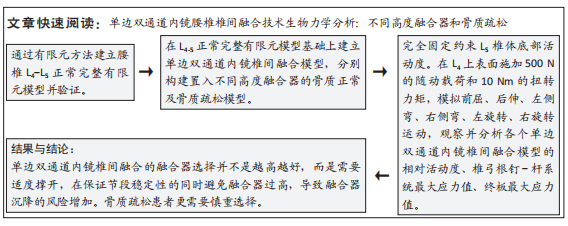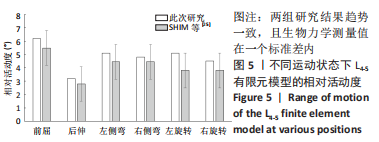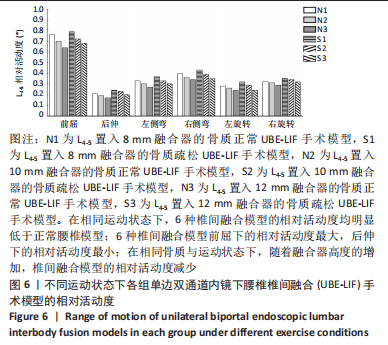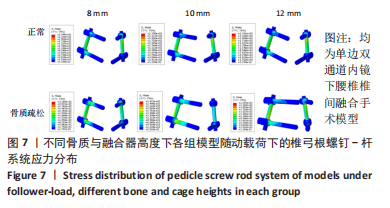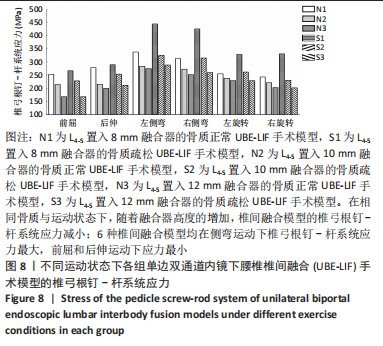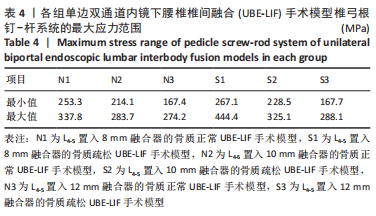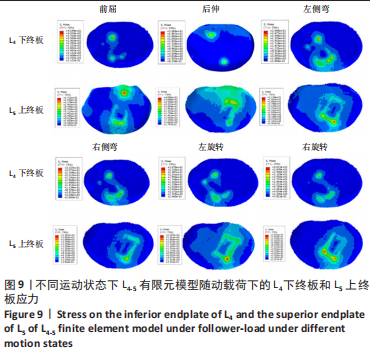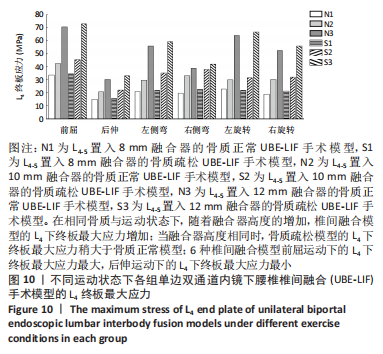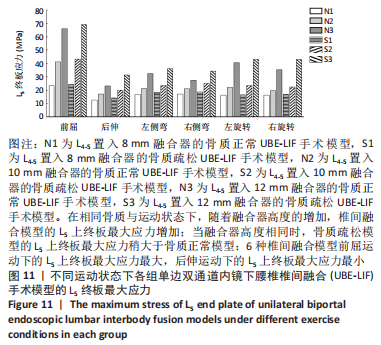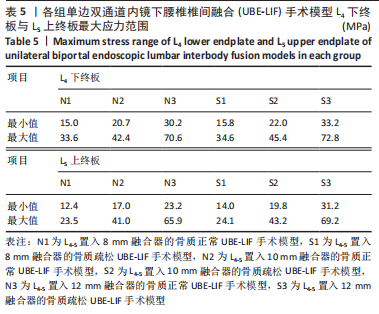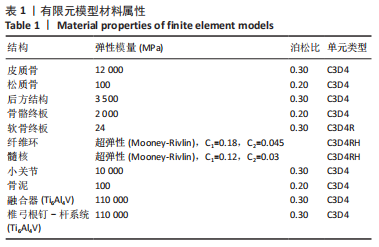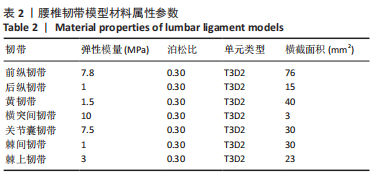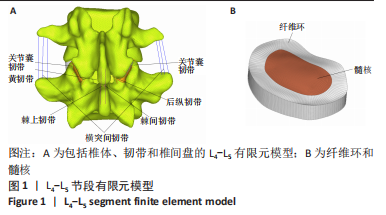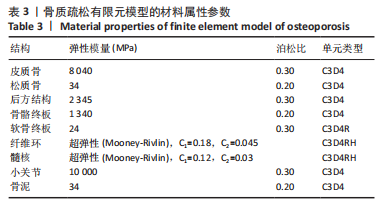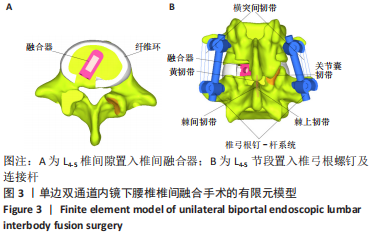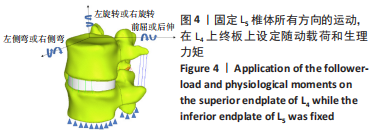[1] YASUHARA T, SASADA S, DATE I. [Lumbar Degenerative Disease:Key for Diagnosis]. No Shinkei Geka. 2021;49(6):1233-1245.
[2] OPPENHEIMER JH, DECASTRO I, MCDONNELL DE. Minimally invasive spine technology and minimally invasive spine surgery: a historical review. Neurosurg Focus. 2009;27(3):E9.
[3] MOBBS RJ, LI J, SIVABALAN P. Outcomes after decompressive laminectomy for lumbar spinal stenosis: comparison between minimally invasive unilateral laminectomy for bilateral decompression and open laminectomy: clinical article. J Neurosurg Spine. 2014;21(2):179-186.
[4] HEO DH, SON SK, EUM JH. Fully endoscopic lumbar interbody fusion using a percutaneous unilateral biportal endoscopic technique: technical note and preliminary clinical results. Neurosurg Focus. 2017;43(2):E8.
[5] YANG J, LIU C, HAI Y. Percutaneous Endoscopic Transforaminal Lumbar Interbody Fusion for the Treatment of Lumbar Spinal Stenosis: Preliminary Report of Seven Cases with 12-Month Follow-Up. Biomed Res Int. 2019;2019:3091459.
[6] DU JY, KIELY PD, AL MAAIEH M. Lateral lumbar interbody fusion with unilateral pedicle screw fixation for the treatment of adjacent segment disease: a preliminary report. J Spine Surg. 2017;3(3):330-337.
[7] YAO YC, CHOU PH, LIN HH. Risk Factors of Cage Subsidence in Patients Received Minimally Invasive Transforaminal Lumbar Interbody Fusion. Spine (Phila Pa 1976). 2020;45(19):E1279-e1285.
[8] SINGHATANADGIGE W, SUKTHUAYAT A, TANAVIRIYACHAI T. Risk factors for polyetheretherketone cage subsidence following minimally invasive transforaminal lumbar interbody fusion. Acta Neurochir (Wien). 2021;163(9):2557-2565.
[9] TAN JH, CHEONG CK, HEY HWD. Titanium (Ti) cages may be superior to polyetheretherketone (PEEK) cages in lumbar interbody fusion: a systematic review and meta-analysis of clinical and radiological outcomes of spinal interbody fusions using Ti versus PEEK cages. Eur Spine J. 2021;30(5):1285-1295.
[10] IGARASHI H, HOSHINO M, OMORI K. Factors Influencing Interbody Cage Subsidence Following Anterior Cervical Discectomy and Fusion. Clin Spine Surg. 2019;32(7): 297-302.
[11] CHOI WS, KIM JS, HUR JW. Minimally Invasive Transforaminal Lumbar Interbody Fusion Using Banana-Shaped and Straight Cages: Radiological and Clinical Results from a Prospective Randomized Clinical Trial. Neurosurgery. 2018;82(3):289-298.
[12] JONES C, OKANO I, SALZMANN SN. Endplate volumetric bone mineral density is a predictor for cage subsidence following lateral lumbar interbody fusion: a risk factor analysis. Spine J. 2021;21(10):1729-1737.
[13] HIYAMA A, SAKAI D, KATOH H. Comparative Study of Cage Subsidence in Single-Level Lateral Lumbar Interbody Fusion. J Clin Med. 2022;11(5):1374.
[14] DERMAN PB, OHNMEISS DD, LAUDERBACK A, et al. Indirect Decompression for the Treatment of Degenerative Lumbar Stenosis. Int J Spine Surg. 2021;15(6):1066-1071.
[15] OH KW, LEE JH, LEE JH. The Correlation Between Cage Subsidence, Bone Mineral Density, and Clinical Results in Posterior Lumbar Interbody Fusion. Clin Spine Surg. 2017;30(6):E683-e689.
[16] FAN W, GUO LX, ZHAO D. Posterior Lumbar Interbody Fusion Versus Transforaminal Lumbar Interbody Fusion: Finite Element Analysis of the Vibration Characteristics of Fused Lumbar Spine. World Neurosurg. 2021;150:e81-e88.
[17] LU T, REN J, SUN Z. Relationship between the elastic modulus of the cage material and the biomechanical properties of transforaminal lumbar interbody fusion: A logarithmic regression analysis based on parametric finite element simulations. Comput Methods Programs Biomed. 2022;214:106570.
[18] HEINZ VON DER HOEH N, VILLA T, GALBUSERA F. Analysis of a Unilateral Bridging Cage for Lumbar Interbody Fusion: 2-Year Clinical Results and Fusion Rate with a Focus on Subsidence. World Neurosurg. 2018;116:e308-e314.
[19] LIU X, MA J, PARK P. Biomechanical comparison of multilevel lateral interbody fusion with and without supplementary instrumentation: a three-dimensional finite element study. BMC Musculoskelet Disord. 2017;18(1):63.
[20] YU Y, ZHOU Q, XIE YZ. Effect of Percutaneous Endoscopic Lumbar Foraminoplasty of Different Facet Joint Portions on Lumbar Biomechanics: A Finite Element Analysis. Orthop Surg. 2020;12(4):1277-1284.
[21] LI J, XU W, ZHANG X. Biomechanical role of osteoporosis affects the incidence of adjacent segment disease after percutaneous transforaminal endoscopic discectomy. J Orthop Surg Res. 2019;14(1):131.
[22] HEO DH, HONG YH, LEE DC. Technique of Biportal Endoscopic Transforaminal Lumbar Interbody Fusion. Neurospine. 2020;17(Suppl 1):S129-S137.
[23] KIM JE, CHOI DJ. Unilateral biportal endoscopic decompression by 30° endoscopy in lumbar spinal stenosis: Technical note and preliminary report. J Orthop. 2018; 15(2):366-371.
[24] VADAPALLI S, SAIRYO K, GOEL VK. Biomechanical rationale for using polyetheretherketone (PEEK) spacers for lumbar interbody fusion-A finite element study. Spine (Phila Pa 1976). 2006;31(26):E992-998.
[25] SHIM CS, PARK SW, LEE SH. Biomechanical evaluation of an interspinous stabilizing device, Locker. Spine (Phila Pa 1976). 2008;33(22):E820-827.
[26] HEO DH, LEE N, PARK CW. Endoscopic Unilateral Laminotomy with Bilateral Discectomy Using Biportal Endoscopic Approach: Technical Report and Preliminary Clinical Results. World Neurosurg. 2020;137:31-37.
[27] PARK MK, PARK SA, SON SK. Clinical and radiological outcomes of unilateral biportal endoscopic lumbar interbody fusion (ULIF) compared with conventional posterior lumbar interbody fusion (PLIF): 1-year follow-up. Neurosurg Rev. 2019;42(3):753-761.
[28] KIM JE, CHOI DJ. Biportal Endoscopic Transforaminal Lumbar Interbody Fusion with Arthroscopy. Clin Orthop Surg. 2018;10(2):248-252.
[29] HEO DH, SHARMA S, PARK CK. Endoscopic Treatment of Extraforaminal Entrapment of L5 Nerve Root (Far Out Syndrome) by Unilateral Biportal Endoscopic Approach: Technical Report and Preliminary Clinical Results. Neurosurg. 2019;16(1):130-137.
[30] KIM SK, KANG SS, HONG YH. Clinical comparison of unilateral biportal endoscopic technique versus open microdiscectomy for single-level lumbar discectomy: a multicenter, retrospective analysis. J Orthop Surg Res. 2018;13(1):22.
[31] BERMEL EA, BAROCAS VH, ELLINGSON AM. The role of the facet capsular ligament in providing spinal stability. Comput Methods Biomech Biomed Engin. 2018;21(13): 712-721.
[32] CLAESON AA, BAROCAS VH. Computer simulation of lumbar flexion shows shear of the facet capsular ligament. Spine J. 2017;17(1):109-119.
[33] SEBAALY A, GROBOST P, MALLAM L. Description of the sagittal alignment of the degenerative human spine. Eur Spine J. 2018;27(2):489-496.
[34] LÖFFLER MT, SOLLMANN N, MEI K. X-ray-based quantitative osteoporosis imaging at the spine. Osteoporos Int. 2020;31(2):233-250.
[35] CHEN HC, WU JL, HUANG SC. Biomechanical evaluation of a novel pedicle screw-based interspinous spacer: A finite element analysis. Med Eng Phys. 2017;46:27-32.
[36] BAE JS, LEE SH, KIM JS. Adjacent segment degeneration after lumbar interbody fusion with percutaneous pedicle screw fixation for adult low-grade isthmic spondylolisthesis: minimum 3 years of follow-up. Neurosurg. 2010;67(6):1600-1607.
[37] YENI YN, HOU FJ, VASHISHTH D. Trabecular shear stress in human vertebral cancellous bone: intra- and inter-individual variations. J Biomech. 2001;34(10):1341-1346.
[38] HANSEN U, ZIOUPOS P, SIMPSON R. The effect of strain rate on the mechanical properties of human cortical bone. J Biomech Eng. 2008;130(1):011011.
[39] WU Y, LOAIZA J, BANERJI R, et al. Structure-function relationships of the human vertebral endplate. JOR spine. 2021;4(3):e1170.
[40] FAN W, GUO LX. Biomechanical comparison of the effects of anterior, posterior and transforaminal lumbar interbody fusion on vibration characteristics of the human lumbar spine. Comput Methods Biomech Biomed Engin. 2019;22(5):490-498.
[41] WESTBURY LD, SHERE C, EDWARDS MH. Cluster Analysis of Finite Element Analysis and Bone Microarchitectural Parameters Identifies Phenotypes with High Fracture Risk. Calcif Tissue Int. 2019;105(3):252-262.
[42] POLIKEIT A, NOLTE LP, FERGUSON SJ. The effect of cement augmentation on the load transfer in an osteoporotic functional spinal unit: finite-element analysis. Spine (Phila Pa 1976). 2003;28(10):991-996.
[43] FORMBY PM, KANG DG, HELGESON MD. Clinical and Radiographic Outcomes of Transforaminal Lumbar Interbody Fusion in Patients with Osteoporosis. Global Spine J. 2016;6(7):660-664.
[44] KALIYA-PERUMAL AK, SOH TLT, TAN M. Factors Influencing Early Disc Height Loss Following Lateral Lumbar Interbody Fusion. Asian Spine J. 2020;14(5):601-607.
[45] RASTEGAR S, ARNOUX PJ, WANG X. Biomechanical analysis of segmental lumbar lordosis and risk of cage subsidence with different cage heights and alternative placements in transforaminal lumbar interbody fusion. Comput Methods Biomech Biomed Engin. 2020;23(9):456-466.
[46] CAPPELLETTO B, GIORGIUTTI F, BALSANO M. Evaluation of the effectiveness of expandable cages for reconstruction of the anterior column of the spine. J Orthop Surg (Hong Kong). 2020;28(1):2309499019900472.
[47] PEKMEZCI M, TANG JA, CHENG L. Comparison of expandable and fixed interbody cages in a human cadaver corpectomy model, part I: endplate force characteristics. J Neurosurg Spine. 2012;17(4):321-326.
[48] YAO N, WANG W, LIU Y. Percutaneous endoscopic lumbar discectomy and interbody fusion with B-Twin expandable spinal spacer. Arch Orthop Trauma Surg. 2011;131(6):791-796.
|
